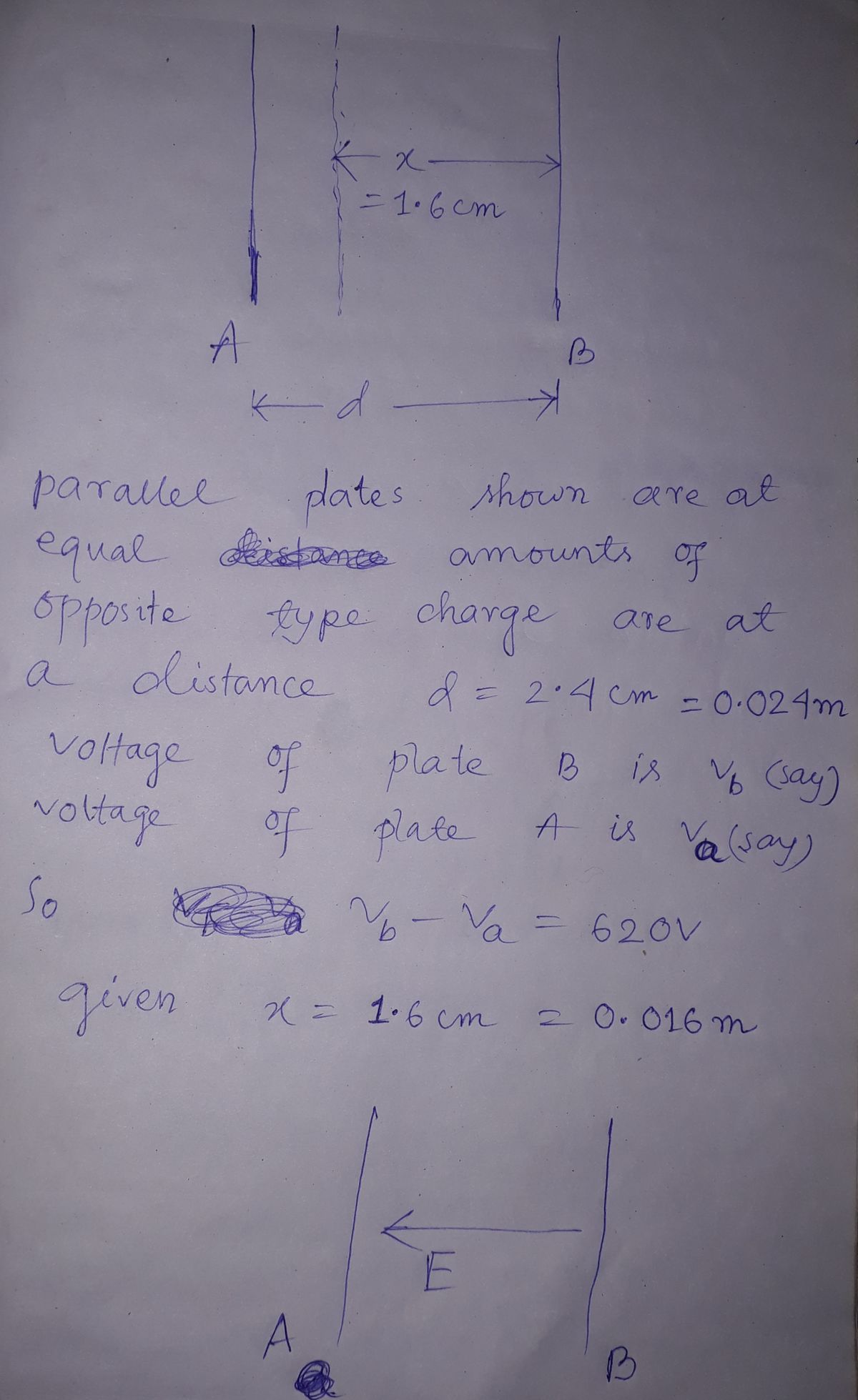A charged ball with mass, m = 0.011 kg, and excess charge, q = -640 μC, is released from rest on the equipotential contour (dashed line) shown in the figure. (d) Determine the magnitude and direction of the ball's acceleration. m/s² toward plate B a = -5.81e-2 (e) Calculate the work done by the electric field on the charged ball by the time it hits the plate. WE = (f) What was the change in the ball's kinetic energy by the time it hit the plate? ΔK = (g) How fast was the ball moving when it hit the plate? m/s V =
A charged ball with mass, m = 0.011 kg, and excess charge, q = -640 μC, is released from rest on the equipotential contour (dashed line) shown in the figure. (d) Determine the magnitude and direction of the ball's acceleration. m/s² toward plate B a = -5.81e-2 (e) Calculate the work done by the electric field on the charged ball by the time it hits the plate. WE = (f) What was the change in the ball's kinetic energy by the time it hit the plate? ΔK = (g) How fast was the ball moving when it hit the plate? m/s V =
Related questions
Question

Transcribed Image Text:A charged ball with mass, m = 0.011 kg, and excess charge, q = -640 μC, is
released from rest on the equipotential contour (dashed line) shown in the figure.
(d) Determine the magnitude and direction of the ball's acceleration.
a = -5.81e-2
m/s² toward plate B
(e) Calculate the work done by the electric field on the charged ball by the time it hits the plate.
WE =
(f) What was the change in the ball's kinetic energy by the time it hit the plate?
ΔΚ
(g) How fast was the ball moving when it hit the plate?
V =
m/s

Transcribed Image Text:The parallel plates shown in the figure carry equal amounts of
opposite type charge and are a distance, d = 2.4 cm apart.
The electric potential on plate B is 620-V higher than that on plate A.
The figure also shows an equipotential contour (dashed line)
that is located a distance, x = 1.6 cm, from plate B.
Expert Solution
Step 1

Step by step
Solved in 5 steps with 5 images
